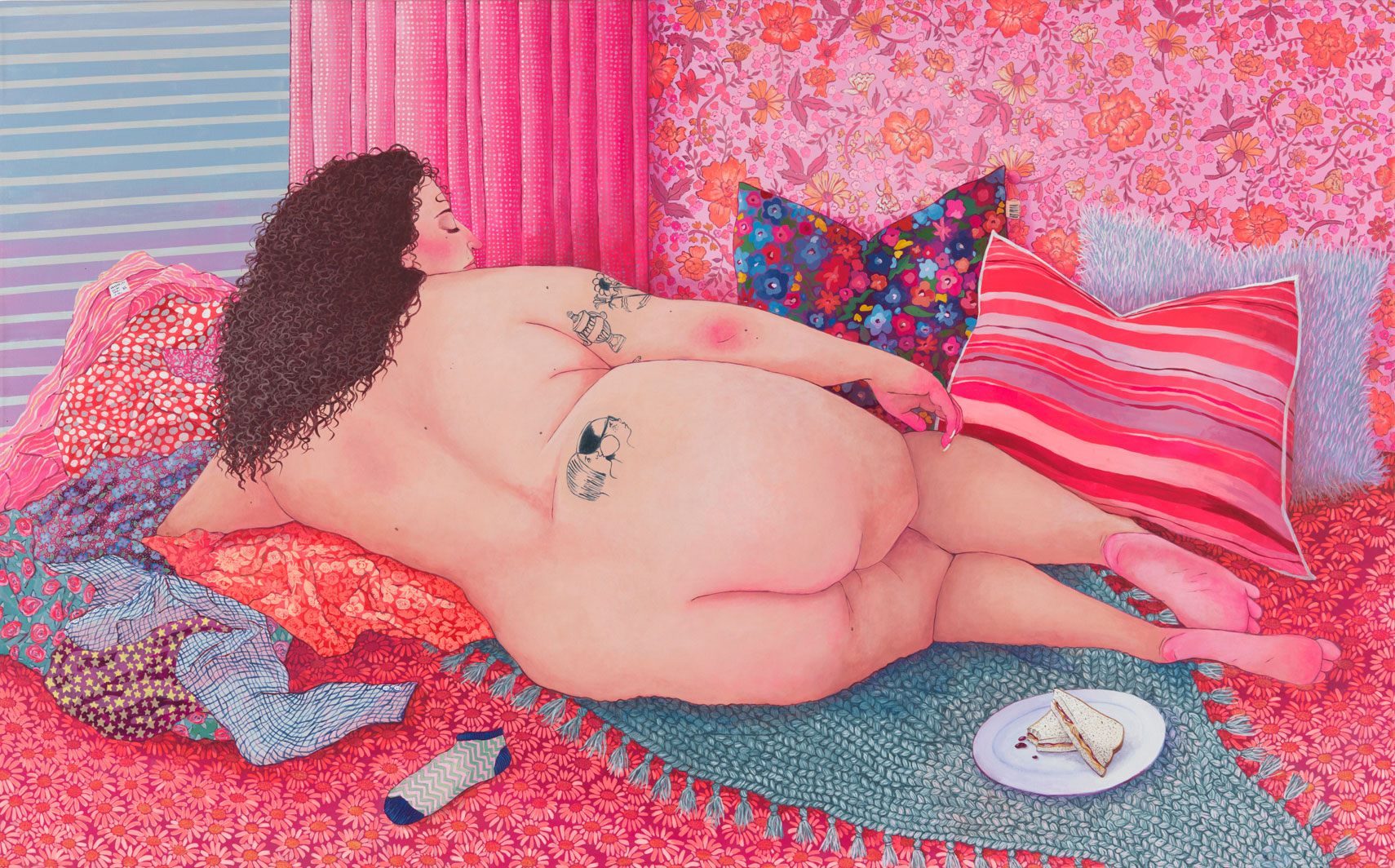
Painting your nails, waxing your body hair, sitting on the toilet—these are not glamorous activities. But for artist Shona McAndrew, that’s where a woman’s beauty lies. The Paris-born artist’s first solo show, “Muse,” curated by Cultured Contributing Editor Maria Brito at TriBeCa’s Chart Gallery, includes both life-size and miniature sculptures as well as paintings, all of or inspired by the plus-size women in her life. Her work urges the viewer to come into a woman’s most private spaces—her bedroom, living room, bathroom—and revel in her environment. “I wanted to create moments of privacy where women are really themselves,” she says. McAndrew’s pieces add to the rapidly growing global conversation about body positivity, urging us to break free from the confines of the traditional norms of beauty. Inspired by classical harem paintings where women lounge around waiting for men, she strives to reclaim the word by showing what real-life women look like in their moments of coveted privacy.
To create each work, McAndrew sends a close friend a photograph of herself, often naked, asking them to interpret it and respond with a pose of their own. These mutual exchanges bring a sense of the consensuality and intimacy that is often lost in modeling. She doesn’t want her subjects to feel like objects, and so she fosters an equality in her practice: “I give a piece of myself to them and they give me a part of themselves back. They’ve given me parts of themselves, their bodies, and allowed me to reinvent the world.”
What motivates McAndrew is a desire to make women feel beautiful, particularly those who are not often depicted as such. Both her sculptures and paintings are saturated with vibrant colors, and each woman is subtly seductive, graceful and strong. The sculptures’ tangible quality forces the viewer into conversation with the woman it represents, the largest standing over six feet tall. McAndrew’s paintings, meanwhile, are full of references to classical art, breadcrumbs for her fellow history buffs to discover.
Ultimately, she wants her audience to see the true beauty of those in her art, to try and let go of what society and art history has taught them about women and their bodies. “They are art history. I want them to feel glorious,” she says. McAndrew is part of a movement today that advocates for more diverse representation of body types that, until recently, were often shunned. With each piece she creates, McAndrew asks us to consider body positivity and acceptance on both a social and individual scale. While understanding the weight of her work and the role it plays in the larger conversation, she states her innermost goal with a heartfelt simplicity: “I want these women to feel more beautiful than anything.”










 in your life?
in your life?

